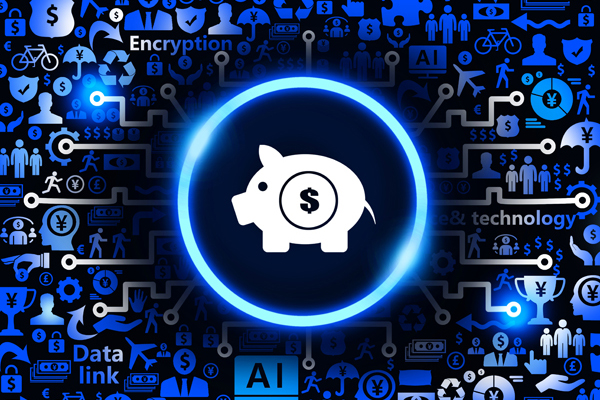Bitwise: The last major risk to Bitcoin has been eliminated

I first heard about Bitcoin in February 2011.
I was working at ETF.com at the time, managing a team of young financial analysts and running the world’s first ETF data and analytics service. We met weekly to discuss what was happening in the market. In February 2011, Bitcoin’s price broke $1 for the first time, and one of my analysts mentioned this historic “dollar threshold.” He then led a fascinating discussion about what Bitcoin is, how it works, and where it might go.
If I had invested $1,000 in Bitcoin after that meeting, that investment would be worth $88 million today. Instead, I left the office and went to get a cup of coffee.
I share this story because everyone—literally everyone—felt this way. We all wish we had bought into Bitcoin sooner.
But what we miss in these stories is that there was a lot of risk in Bitcoin at the time.
For example, on the day I attended the $1 Bitcoin meeting, the world’s largest cryptocurrency exchange was New Liberty Financial. Here are their terms of service. ¹
In hindsight, it’s easy to say I should have bought $1,000 of Bitcoin. But at the time, that meant wiring $1,000 to a random PayPal account. Add to that the custody, regulatory, technical, and government risks… and putting $1,000 on Bitcoin in 2011 was a huge gamble.
I’m sharing this story now for two reasons: first, so you don’t have to beat yourself up for missing out on investing in Bitcoin, and second, so you can believe that things are different now.
In fact, I believe that today — right now — is the best time ever to buy Bitcoin in terms of risk-adjusted terms.
We just eliminated the last major existential risk to Bitcoin
Every investment involves weighing risk against reward. A lottery ticket could turn $1 into $1 billion, but your expected return is zero.
In its early days, Bitcoin was a bit like a lottery: there was a huge upside, but the risk was equally huge.
For example, when Bitcoin first launched, there was no guarantee that it would even work. Yes, the white paper was brilliant. Logically, it seemed like it should work. But there had been multiple attempts to build electronic cash systems before Bitcoin, and they all failed. (For an example, take a look at this 1997 NSA paper, “How to Mint Money: Cryptography for Anonymous Electronic Cash.”)
But in the early days of Bitcoin, there were other major risks besides the technology itself. For years, trading was a risk factor—early trading platforms were either unreliable or plagued by low trading volumes and poor operations. That changed with the founding of Coinbase in late 2011.
For a while, custody was also a risk factor—until established blue-chip companies like Fidelity began offering self-custody and institutional custody services.
In the early days of Bitcoin, people were still There are legitimate concerns about money laundering, criminal activity, regulatory standards, mining centralization, and more.
The amazing thing about Bitcoin is that it has slowly but surely eliminated each of these major existential risks over time.
The launch of a Bitcoin spot ETF in January 2024 takes us over another major hurdle, providing regulatory clarity for US institutional investors interested in entering this space.
But even after the launch of the ETF, there is one major existential risk that keeps lingering in my mind: What if the government bans Bitcoin?
US Strategic Bitcoin Reserve
This is what I always get asked in conferences, “What keeps you up at night?”
I always wondered why the United States, which famously confiscated privately held gold in 1933 to fill its coffers, would allow Bitcoin to grow to a size that threatened the dollar?
To be honest, I didn’t know the answer at the time.
When pressed on stage, I always remind people that the U.S. government “bought” gold from the public in 1933: I would say that if Bitcoin grew to a size that challenged the dollar, your investment would probably have made a killing.
That’s the best answer I can give.
But earlier this month, President Trump signed an executive order establishing the U.S. Strategic Bitcoin Reserve. Just like that, the last major existential risk facing Bitcoin disappeared before my eyes.
A lot of people are wondering why the United States did this. Cliff Asness, founder of hedge fund AQR Capital, Asness, a former strategist at the University of Wisconsin-Madison, wrote immediately after Trump signed the executive order: “If cryptocurrencies are a viable long-term competitor to the dollar, why on earth would we promote a direct competitor to our status as the world’s reserve currency?”
The answer, of course, is that Bitcoin is better than the alternatives. The best case scenario for the United States is that the dollar continues to be the world’s reserve currency. But if the day comes when the dollar’s status is at risk, we are better off choosing Bitcoin as an alternative than something like the renminbi.
Here’s what I didn’t expect at first: Of course the United States will accept Bitcoin. It’s the best fallback on the market.
What this means for investors
In practical terms, at Bitwise, we’re already starting to see the effects of this risk reduction. Two years ago, Bitwise clients would typically allocate about 1% of their portfolios to Bitcoin and other crypto assets, a percentage they wouldn’t mind losing. Given the possibility that Bitcoin could be banned or face other failures, that made sense. But in today’s environment, that’s no longer the case. We more often see clients allocating 3% of their funds to Bitcoin. As more people in the world realize that Bitcoin’s risk has been significantly reduced, I think that percentage will rise to 5% or even higher.









